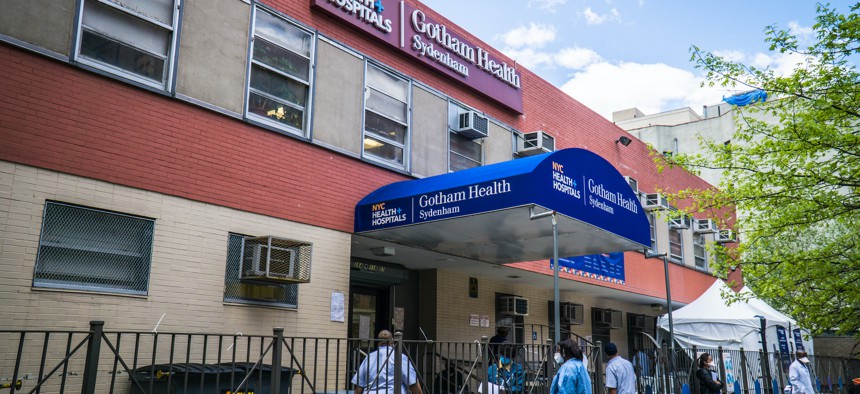The year 2020 will live in our memories as one of the most devastating periods in our country’s history. The convergence of a dangerous and divisive federal government, the COVID-19 pandemic, mass unemployment and the murder of George Floyd, which encapsulated a long history of racial violence, created chaos and instability. While we are on a road to recovery, there is no doubt that the COVID-19 pandemic has forever changed our nation. Yet, as we look back at this past year, there is one lesson that remains significantly unaltered by new policy, robust marketing campaigns or additional federal funding: the longstanding health inequities in communities of color that have long been ignored.
Some officials have peripherally acknowledged that the pandemic disproportionately ravaged Latino communities, but too often it is only rhetoric without action. As Latino leaders in public health, it is a painful cycle to endure.
According to recent New York City Department of Health and Mental Hygiene data, Latinos are still leading in cumulative confirmed case, hospitalization and death rates, with 8,031.25 cases, 1,305.98 hospitalizations and 346.95 deaths for every 100,000 people.
That Latinos have borne the brunt of this crisis is a tragic yet unsurprising reality to those of us in the field, given that the disproportionate effects of COVID-19 on New York’s Latino – and mostly immigrant – communities are inextricably linked to historic disinvestment and lack of interest in Latino community wellness.
Latinos face significant risk factors that increase rates of infection, hospitalization and deaths. They are more likely than whites to be essential workers and to live in overcrowded and multigenerational households, while being less likely to have access to health care. These are the same issues that historically account for inequities in other health outcomes and these disparities in housing, education and employment are compounded by lower rates of health insurance coverage, lack of paid sick leave and other basic inequities tied to a lack of targeted health policy.
If we are really to address the health disparities plaguing Latino communities, we need to be mindful to not confuse investments in our healthcare delivery system with comprehensive public health policy. When talking about improving disparities in communities of color, we tend to focus on improving the infrastructure of our public healthcare delivery system, while neglecting public health investments that would address the underlying social drivers of health. Both investments add value, but for a case study on the ripple effects of COVID-19 and how economics, education and health are interdependent and require braided approaches acknowledging that people are not segmented into silos, let’s look at early childhood centers, also known as ECCs.
As our city began to reopen, ECCs were surveyed by DOH on what they needed to safely operate. Many ECCs responded, but as officials worked to make sure the feedback was geographically representative, it became clear that ECCs in places like the South Bronx and Central Brooklyn had shut down indefinitely because of their inability to rely on and access cash reserves or other emergency resources and support, leaving mostly Latino families without adequate childcare. These mostly small businesses, run by women of color providing services to other women of color to remain in the workforce, offered high quality early childhood education – one of the best ways to set up children for educational and health success. The ripple effects of these closures reinforce the systemically and institutionally racist structures that have long kept Latinos on the fringes.
Similarly, as health care transitions more towards telemedicine, there should be concerns about the digital divide and the degree to which Latinos, particularly seniors, will be able to access care and information. Digital inequity is undoubtedly affecting vaccination efforts and while community-based organizations help bridge the gap, they are often under-resourced.
While the number of New Yorkers newly diagnosed with COVID-19 continues to fluctuate and we navigate a historic vaccination effort contextualized by historic mistrust and cultural incompetence, we must focus on the bigger picture. What people eat, where people live, and where we direct resources are fundamental to addressing profound health disparities. For example, Latinos tend to have higher rates of diabetes, which has been linked to far worse COVID-19 outcomes. The increase in food insecurity, which is prevalent in Latino communities, can make controlling diabetes more challenging, which can lead to significant complications like blindness and kidney failure. The health of Latino communities would benefit not only from more health care access points, but also from improving walkability and access to affordable healthy food in Latino neighborhoods – a built environment that supports mental and physical health flourishing.
So where are we today? We’re exactly where we were before the pandemic, but with additional stressors and without a well-rounded public health plan for New York’s diverse Latino communities. Our post-pandemic rebuild needs to take a holistic approach to what makes communities healthy so that Latino communities flourish and do not revert to siloed recovery approaches steeped in structural racism. Clearly, traditional approaches have not worked and in fact, have driven generations of health, educational and economic inequities. This will continue to be a struggle if we don’t confront the fact that public health policy, particularly in communities of color, needs to be restructured and reprioritized.
Anyone who wants to lead New York City or New York state must make this a priority. To do otherwise points to a lack of regard for one of New York’s foundational components: the Latino community.
NEXT STORY: Yang can’t stop remote work


